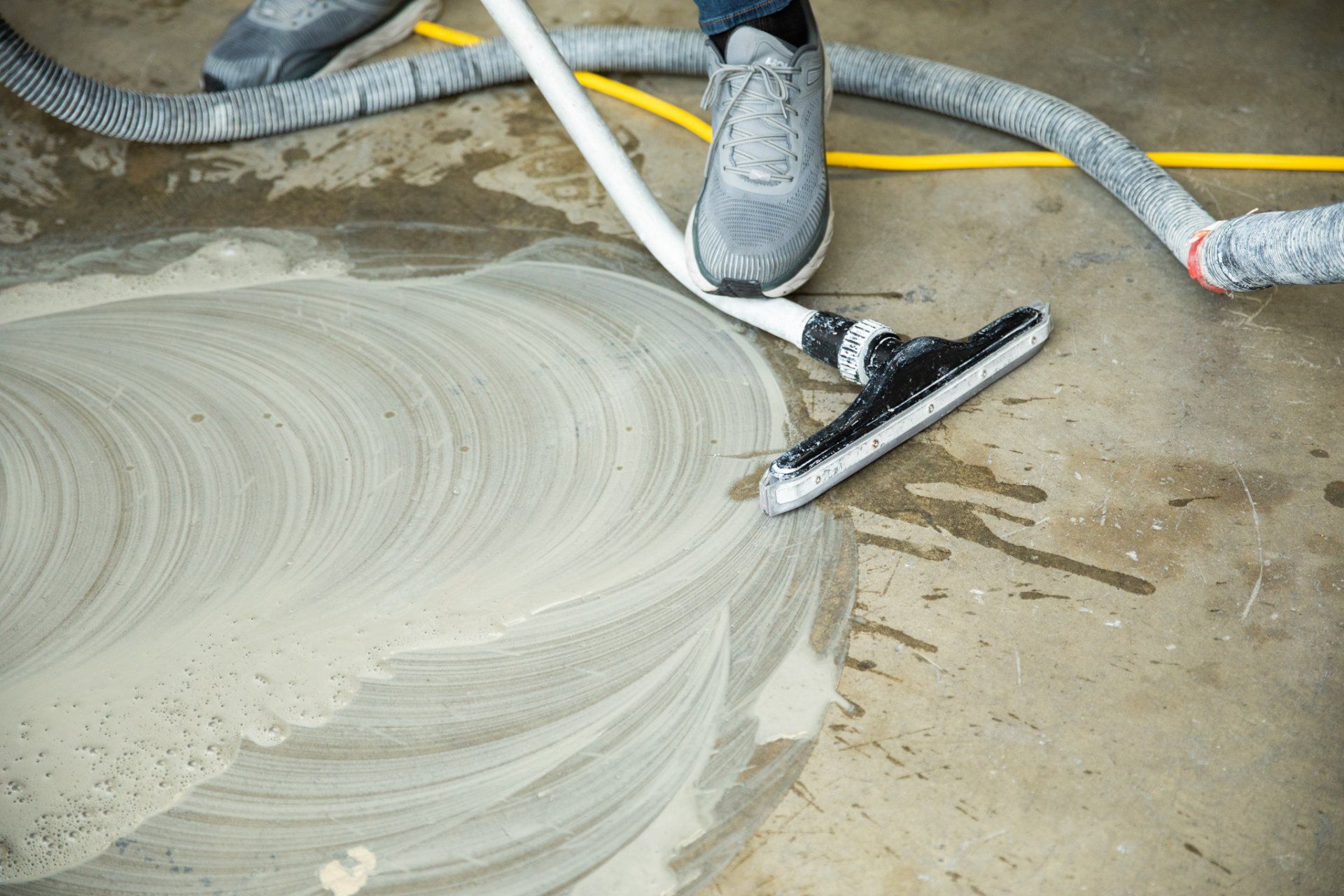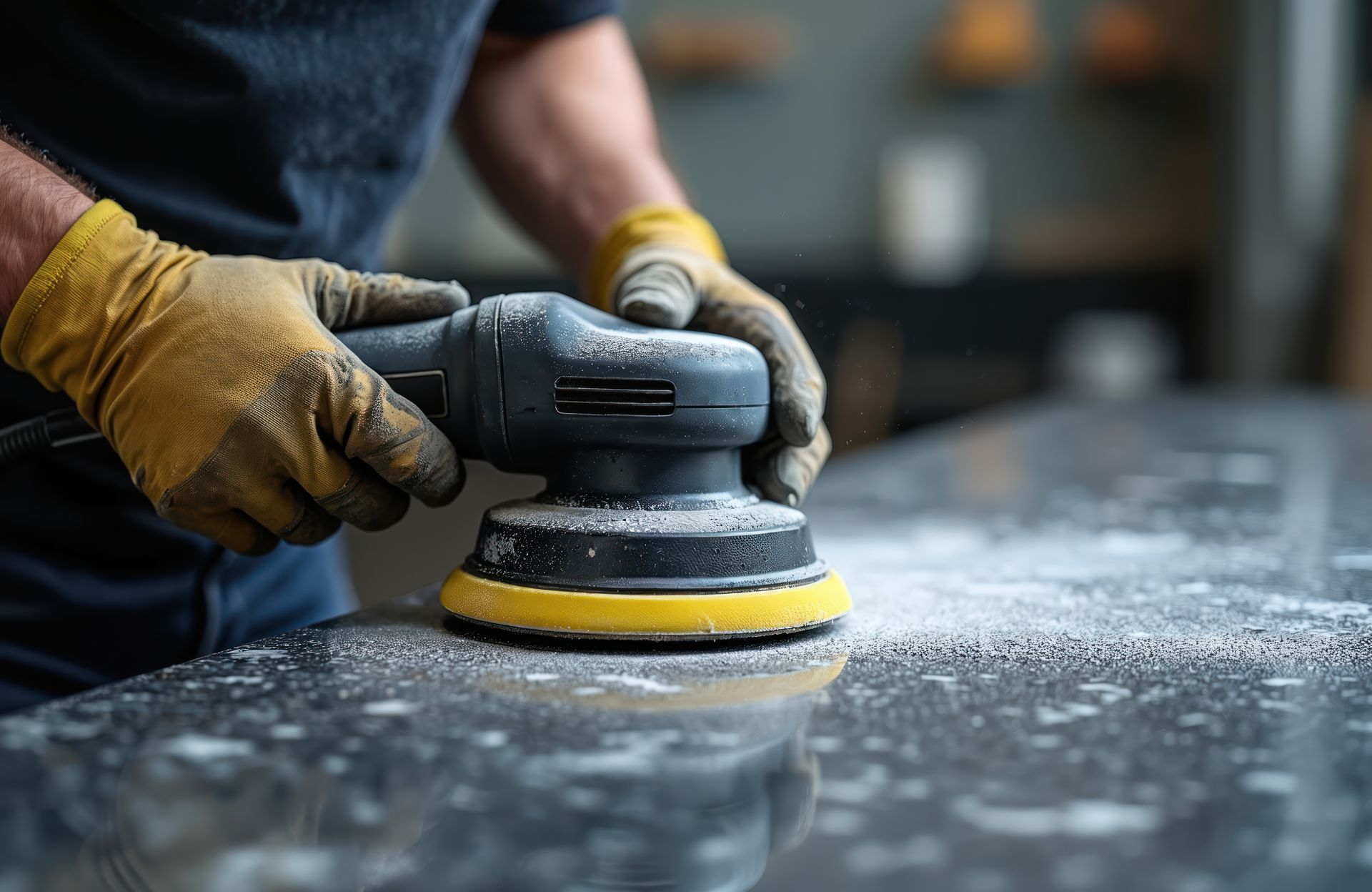Even in San Diego’s mild coastal climate, your natural stone surfaces aren’t immune to seasonal stress. Cooler temperatures, increased indoor humidity, and ocean air filled with salts can all impact the look and longevity of marble, travertine, and limestone. Whether it’s your kitchen floors, shower walls, or a polished lobby entryway, now is the perfect time to prepare your stone for the winter season — before small imperfections turn into costly repairs.
Why Stone Needs Seasonal Care — Even in Southern California
While we’re lucky to avoid harsh freezes, Southern California’s “winter” brings its own set of challenges. Ocean salt and moisture in the air can deposit microscopic crystals into porous stone, slowly dulling the surface. Meanwhile, increased rainfall can track in water, dirt, and debris from shoes — a combination that wears down protective sealants and leads to discoloration or etching.
Indoor heating systems also change humidity levels, causing stone to expand and contract subtly. Over time, that movement weakens grout lines and can create fine cracks or flaking, particularly in softer materials like travertine or limestone.
By investing a little time in maintenance now, you’ll keep your surfaces shining through the holidays and well into next year.
Step 1: Test the Seal — Your First Line of Defense
The sealant on your stone is what prevents water, oil, and acidic spills from soaking in and causing damage. A quick test can tell you whether it’s time to reseal:
- Pour a small amount of clean water on the surface.
- Wait 10–15 minutes.
- If the water beads up, your seal is still working. If it darkens the stone or soaks in, it’s time to reseal.
Professional-grade sealants are designed to penetrate deeply into natural stone, forming an invisible barrier without altering the color or finish. Marble Stone Polish uses industrial-strength impregnating sealers that resist moisture and protect against etching, staining, and salt damage — essential for homes near the coast.
Step 2: Deep Clean the Right Way
Winter preparation starts with a thorough clean, but not just any cleaner will do. Many off-the-shelf floor products contain acidic or harsh ingredients that can strip away your stone’s protective layer. Always use a pH-neutral cleaner made specifically for natural stone.
Focus on removing surface grime, dried spills, and salts that may have accumulated during the summer months. If your floors or countertops have lost their original sheen, professional polishing can restore that smooth, reflective finish without grinding or resurfacing.
For stubborn areas — like soap scum in bathrooms or dull spots on kitchen floors — it’s best to have a technician assess whether those marks are surface-level stains or deeper etch damage that requires honing or restoration.
Step 3: Inspect Grout and Caulk Lines
Grout and caulk often fail before the stone itself does. Small cracks or missing sections allow moisture to seep beneath tiles, leading to staining and subfloor damage. As humidity increases during winter, this trapped moisture can cause dark patches or loose tiles.
A seasonal inspection ensures everything is sealed tight. Marble Stone Polish technicians repair deteriorated grout and reapply color-matched sealants to create a watertight, uniform finish — protecting both appearance and structure.
Step 4: Address Etching and Dulling Early
Etch marks — those cloudy, dull spots that appear when acid reacts with calcium in marble or limestone — are especially common in kitchens and bathrooms. Citrus, vinegar, wine, and even certain soaps can cause them.
If you notice etching or a general lack of luster, don’t try to “buff” it out yourself. Many DIY methods only worsen the damage. Instead, professional stone polishing and honing safely remove the topmost microlayer of stone to restore the original texture and reflectivity. It’s a simple process that can make your entire room feel brighter and more elegant.
Step 5: Protect Against Moisture and Salt Intrusion
During San Diego’s damp season, moisture and coastal salt are the biggest enemies of natural stone. Entryways, patios, and even interior floors near doors are especially vulnerable.
- Use high-quality mats at entry points to catch water and grit.
- Keep indoor humidity stable (ideally 40–50%) to minimize expansion and contraction.
- If you live close to the beach, schedule periodic professional cleanings to remove salt deposits before they crystallize and etch the stone.
Proper sealing, combined with routine maintenance, will keep these elements from penetrating and damaging your stone.
Step 6: Schedule Professional Maintenance Before the Holidays
With holidays and gatherings approaching, early winter is the perfect time to refresh your stone surfaces. A professional deep cleaning and polish can instantly revitalize the look of your floors, countertops, and walls — and it’s a fraction of the cost of replacement.
Marble Stone Polish provides full-service cleaning, restoration, and sealing for residential and commercial clients throughout San Diego and Orange Counties. Their technicians are trained to work with all natural stone types — including marble, travertine, limestone, granite, flagstone, and Saltillo tile — ensuring each surface gets the proper care it deserves.
A Seasonal Routine That Protects Your Investment
Natural stone isn’t just a design feature — it’s an investment in your property’s long-term value and beauty. By taking these simple preventive steps now, you’ll avoid common winter issues like dulling, water marks, and salt etching, while keeping your home or business looking pristine year-round.
For lasting shine and protection, trust the experts at Marble Stone Polish. Schedule your winter maintenance service today and give your stone the care it deserves before the season begins.


